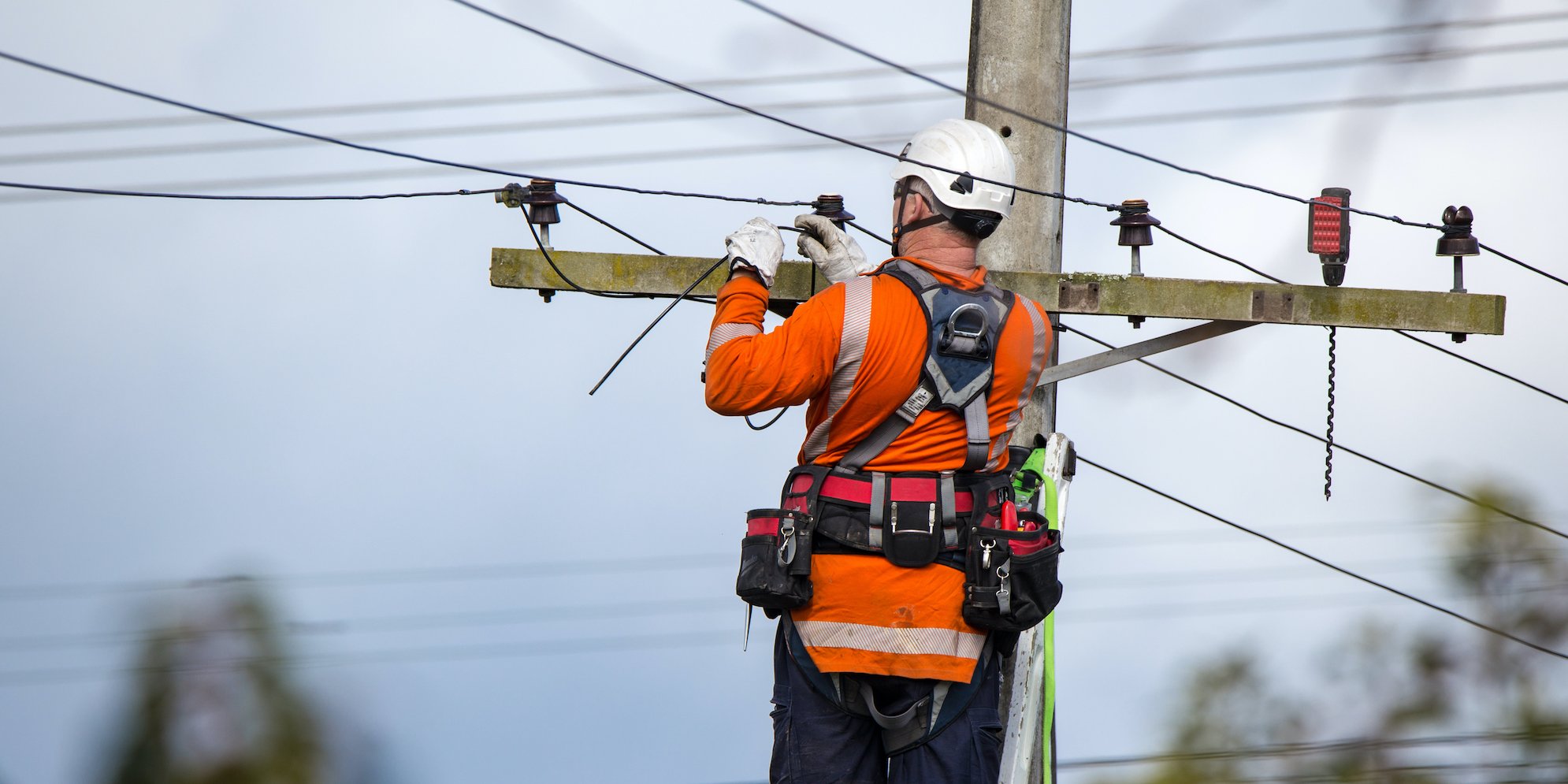This post is part of a series on energy-based hazard recognition. Access Part 2 here and Part 3 here.
Utility work comes with risks. Technicians climb poles, scale trees, dig trenches, and work with heavy equipment that can cause serious injuries and fatalities. For years, industrial safety focused on situational awareness. Experts thought if workers stayed vigilant about their surroundings, they’d better judge and anticipate threats to their safety.
But, there’s a major problem at the root of most situational awareness strategies. Humans, as a species, are terrible at noticing hazards.
Studies have shown that field workers can only identify about 45% of the hazards they encounter on a normal workday. That means over half the sources of potential injury to field workers are blindspots. They often go unnoticed until it’s too late.
If workers don’t notice hazards, they certainly can’t do anything to control them.
The hazard recognition problem isn’t their fault. Cognitive biases in humans make some hazards easy to notice, but demand heavy attention and consideration for others. No one ignores a pipe dangling from a crane or a truck careening down a hill, but most workers miss sources of injury with subtler cues, such as a taut cable ready to snap.
What can environmental health and safety leaders do to call attention to these neglected hazards? They can use the Energy Wheel.
What is the Energy Wheel?
The Energy Wheel is a tool to help industrial workers identify more of the safety hazards they encounter at work. This diagram calls out 10 sources of potential illness and injury common on industrial worksites to help overcome people’s cognitive biases about situations they consider safe or unsafe.
.png?width=707&name=Energy%20Wheel%20(Transparent%20Background).png) The Energy Wheel is a tool that helps utility workers recognize sources of energy on job sites that pose risk of injury.
The Energy Wheel is a tool that helps utility workers recognize sources of energy on job sites that pose risk of injury.Injury prevention scholar Dr. William Haddon pioneered the idea that every illness or injury results from unwanted contact with some sort of energy. The Energy Wheel uses that principle to help workers identify sources of energy common on worksites that pose potential injury — including the sources they naturally miss.
“Our research showed that some hazards are instinctual … while others are processed through complex thought,” says Dr. Matthew Hallowell, professor of construction engineering at University of Colorado Boulder. “The hazard types that we process instinctually are gravity, motion, and ‘moving mechanical.’ We tend to see those first and most often.”
Humans process these instinctual hazards in the amygdala, a part of the brain associated with emotion and emotional responses. The fight-or-flight reaction these hazards provoke actually bypasses conscious thought and stirs up people before they even notice the danger.
But, plenty of other hazards don’t trigger this response.
“Tension, compression, torque, pressurized systems, and changing surface temperature are examples of hazards that require complex thought and are more likely to be missed during normal hazard scans,” says Hallowell.
By using the Energy Wheel, utilities can call their workers’ attention to these hazards they may have missed. Organizations can use the Wheel’s icons to label hazards they find on site or walk through each hazard step-by-step during safety briefings and toolbox talks.
“It helps frontline workers to be more effective in performing the safety activities that they are already performing,” says Hallowell. “The Energy Wheel simply helps us to identify more hazards, more easily.”
Standard safety practices aren’t the only application for the Energy Wheel (although they’re a good start). Workers can better their safety outcomes by using the concept of energy-based hazards to scan their environments for sources of energy — even ones not included in the original model. Taking it further, safety programs and systems can apply the logic of the Energy Wheel as they set proactive controls for worker safety (or incorporate it into safety software, as Urbint has done with its Urbint Lens for Worker Safety).
“Identifying and prioritizing the energy is an important first step,” says Hallowell. “The next step is to ensure adequate controls against hazards, especially high-energy hazards.”
***
.png?width=447&name=Taking%20a%20Proactive%20Approach%20to%20Safety%20Improving%20Outcomes%20Through%20Culture%20and%20Technology%20(1).png)
There’s more to energy-based hazard recognition than just the Energy Wheel, though. Upcoming posts in this series will dig into the details of high-energy hazards common on industrial worksites and how utilities can apply the Energy Wheel in real-life situations to improve safety outcomes for workers.
Want to learn more about ways to improve safety in the utilities? Watch our webinar, Taking a Proactive Approach to Safety: Improving Outcomes Through Culture and Technology, which happened on July 29. Utility safety experts Nick Stavropoulos, former COO of PG&E and National Grid, and Emily Whitcomb, director of Work to Zero at the National Safety Council, shared ideas on building proactive safety cultures, aligning them throughout your organization, and support frontline supervisors in improving safety in the utilities.
Watch it here: https://www.urbint.com/campaign/webinar-taking-a-proactive-approach-to-safety-registration
-1.png)
